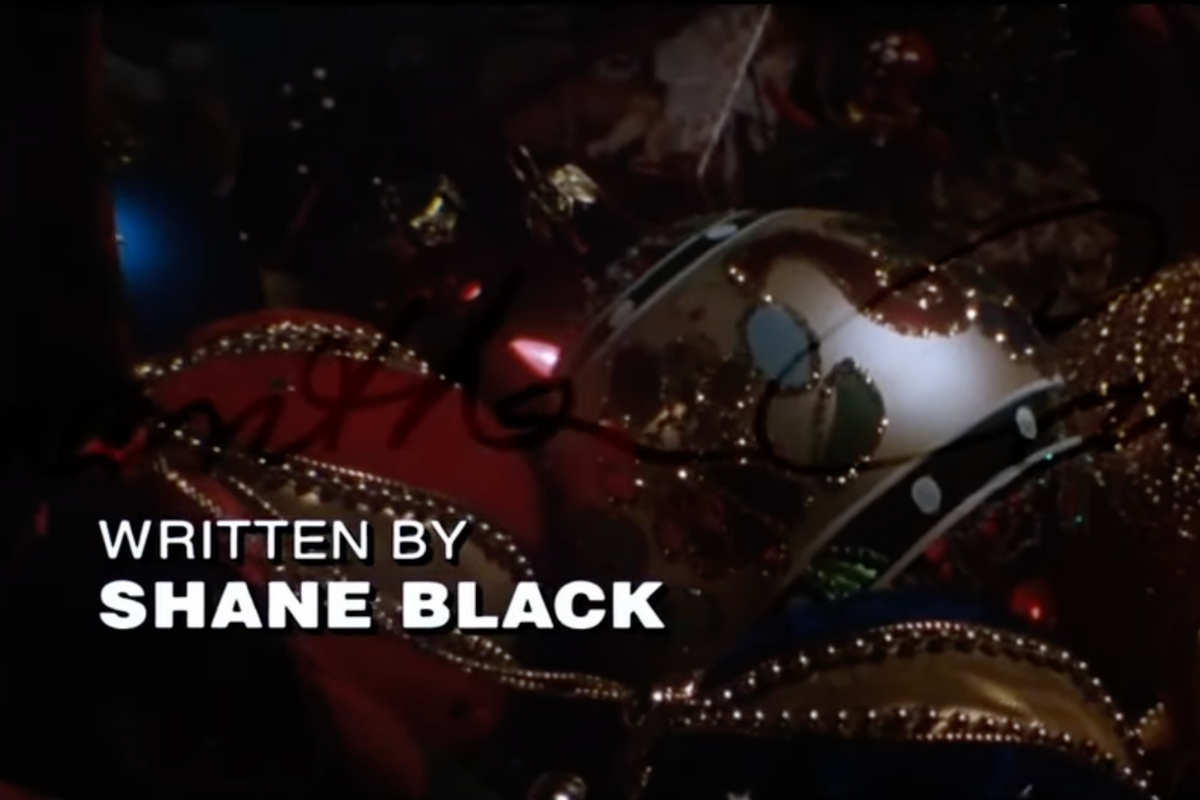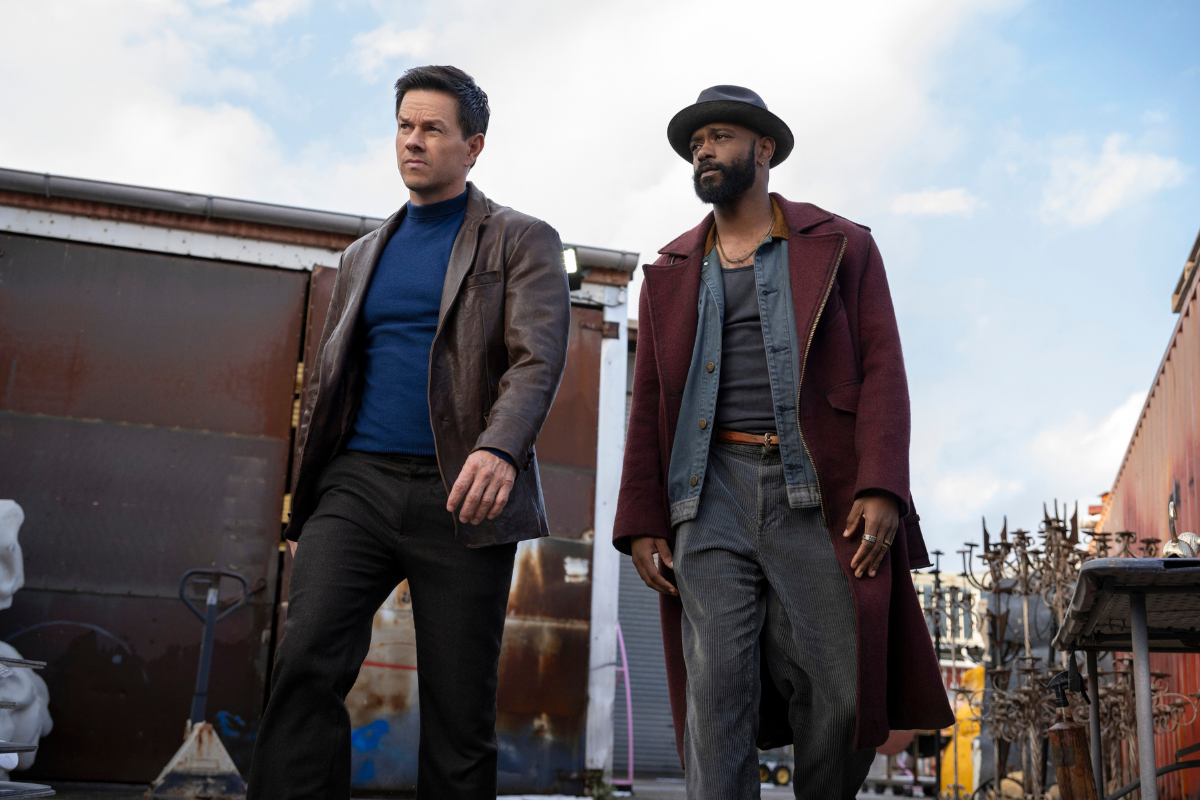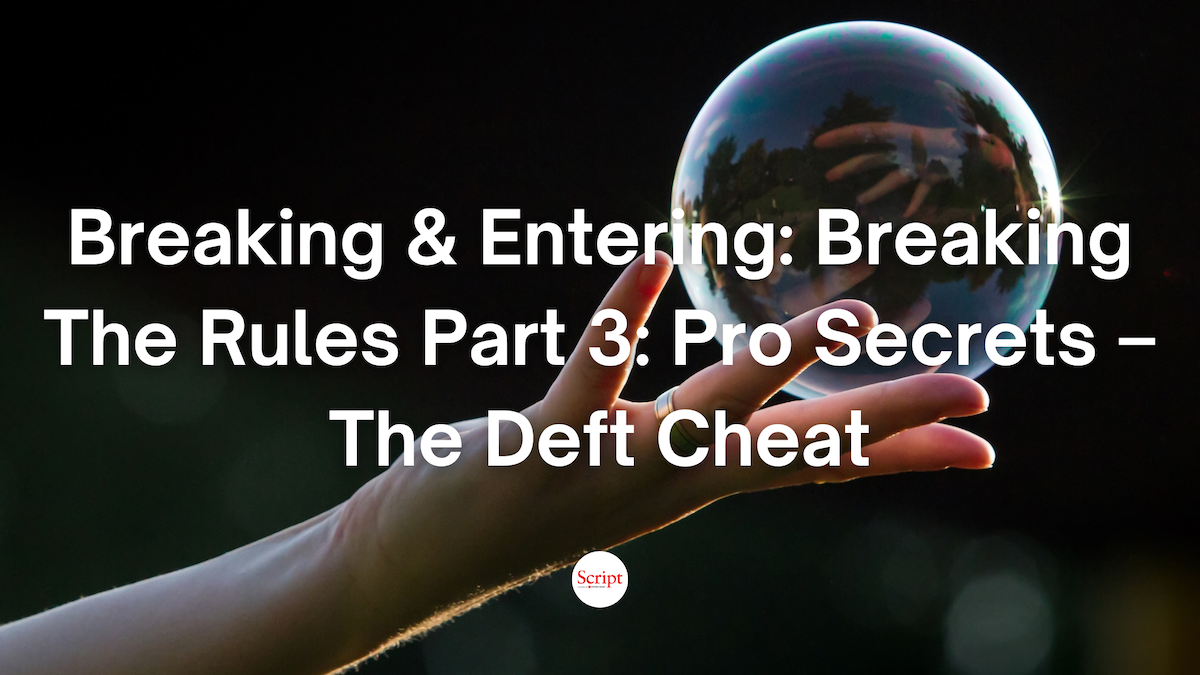What Will Happen Next? Part 2: Suspense in Action
Make our hearts pound! Maximize Suspense in your story. Combine it with Tension and Escalation to become a powerful tool in your elevated writing arsenal. Find secrets to creating a true page-turner. Become a writer whose words engage us on the page – a writer the industry is eager to find.
In my last article, What Will Happen Next? The Art of Suspense, I dug into the fundamentals of Suspense – how and why it works, and ways to incorporate it into your story in every genre. Using Suspense, and its pal, Tension, together can further elevate your writing, making readers eager to keep going.
Tension and Suspense can play off of one another to make stories captivating. Envision the up and down of a seesaw, as focus alternates between the two, back and forth, back and forth. As they increase in intensity and pace, it creates conflict and causes it to escalate. Conflict and Escalation are two more of what I call The Seven Essential Elements of Story. It’s the topic of the first session of my Screenwriting Elevated Online Seminar, because these elements are fundamental to all good stories.
Conflict is key to advancing a narrative. Escalation is essential to maintain our interest. The obstacles a hero faces must increase as the story progresses to keep the audience engaged.
"The hero is only as good as the opposition he is facing."
Raynold Gideon, Screenwriter/Producer Stand by Me, Starman, Mr. Brooks, Speaker at Screenwriting Elevated
Like running the hurdles, the challenges the hero faces should both grow larger and closer together. Over the course of the story, Conflict must rise, the pace must become faster, and achieving the goal becomes ever more difficult for the hero. When the hero makes progress, exciting plots throw in an abrupt – but not out of left field – curveball. A Twist – another Essential Element. The deal goes south. The bad guys close in. A ticking clock is introduced. All to keep the pressure on our protagonist.
Artful use of Tension and Suspense together creates Escalation. In the hands of a master storyteller, it keeps the audience riveted. It teases us with a moment to catch our breath. And then it escalates even more steeply. It makes your script a true page-turner because we can’t wait to find out “What Will Happen Next?”
Suspense and Tension Walk Into A Bar
How to best make these elements work together? There is a simple formula:
Tension + Suspense + Breathe = Escalation
There is an easy way to visualize the interplay of these elements and experience how effectively they work together – stretching a rubber band in front of an audience. This simple demonstration causes the viewer to actually feel Tension and Suspense, punctuated by a moment to Breathe, then immediately followed by Escalation – a sharp rise in Tension and Suspense. As we watch, our brain experiences it as if we were the one in danger of feeling the pain of the sharp sting we anticipate when the rubber band snaps.
Watch The Rubber Band Demonstration and see if you notice your own tension level rise:
If you felt the sensation in your body while watching, you’ve learned a key to engaging your reader and your audience.
All stories should make use of Tension and Suspense, even when the obstacles the character faces are internal ones. However, the strongest examples to watch and learn from can often be found in horror films. They must deliver Tension + Suspense + Breathe = Escalation in rapid-fire succession to succeed. Adding a well-timed Twist further ups the Conflict.
Here’s a scene breakdown from a horror classic in the build-up to the climax:
The Heroine tells the children that she has killed the Killer. He’s dead. Breathe
They spot him behind her and scream! He’s not dead – he’s in the house! Twist! Escalation
The Heroine rushes the children to safety, fakes her exit and hurries to hide in the closet. Will the diversion work? Suspense
The Killer hunts for her – a huge knife in hand. Tension Builds
She tries to tie the closet door shut with shaking hands. Suspense
She succeeds and hides in the corner. Breathe
Seen through the slats, the Killer’s shadow, clutching the knife, passes slowly by, stalking her. He’s about to find her! Tension Increases
The shadow passes by. Her ruse worked. Breathe
But the Killer rattles the closet doors. Escalation
The Killer bangs harder and faster against the closet doors. Will he break through? Suspense
The Heroine curls up in the corner, whimpering in fear. Will the ties hold? Suspense
The shaking increases – it’s louder, more violent; he is determined to get to her. Escalation
She’s trapped and defenseless, paralyzed with fear. Tension
The Killer punches through the slats! The girl can’t help but scream. Escalation
He reaches his arm in, blindly flails to grab her. His arms pull the cord, turning on the light. Escalation
The Killer is revealed as he pushes halfway into the lit closet. Escalation
The Heroine forces herself to reach up and try to grab a coat hanger as her only possible weapon. Suspense
She got it! Breathe
With shaking hands she struggles to turn the hanger into a weapon. Will she succeed in time? Suspense
The Killer spots her! Escalation
The lights go out! Twist! Escalation
In the dark, the Killer stabs at the Heroine with the knife. Escalation
She thrusts the coat hanger in his direction, aiming blindly. Suspense
She’s hit his eye! Wounded, he drops the knife on the closet floor. Breathe
She scrambles closer to him and grabs the knife. Twist!
He falls into the closet, moaning. Tension
The Heroine stabs upward, thrusting the knife with all her might. Escalation
The Killer, mortally wounded, slowly slides to the ground, silent. Suspense
The Heroine struggles to catch her breath. Breathe
He’s dead. Breathe
Or is he…?
As for pacing, this entire sequence is only 2 minutes long!
This rapid back and forth of Tension and Suspense, and the moments designed for us to catch our breath, with Twists to up the Conflict, all work in concert to activate our emotions. When we are fully engaged in “What Will Happen Next?” our brain reacts as if the story were happening to us, pumping out adrenaline, making our heart pound and our breathing quicken. When the intense surprise of the big scare comes, we are primed to jump out of our skin.
Watch this beautifully crafted sequence from Halloween here:
No special effects – just a perfectly matched score, composed by director John Carpenter. It deftly and subtly underscores the action, subliminally ratcheting up Tension and Suspense. It's worth watching again just to focus on and feel the score. It always makes my heart pound!
The World of the Story Feels Real
At an anniversary screening of Halloween, many years ago – a rare chance to see this classic on the big screen – one of our young interns sat beside me. She squirmed throughout, grabbing my arm and nearly crawling into my lap in the scariest scenes. “Jamie Lee Curtis is alive and well and sitting two rows ahead of us!” I whispered to her. It didn’t matter. She was immersed in the world of the film – experiencing it in the shoes of the protagonist, not unlike the Rubber Band Demonstration. The scares were every bit as scary, despite the knowledge that the heroine clearly survived.
In a Facebook screenwriting group, people were praising Apollo 13 for keeping them riveted – even though they had lived through the real-life event and knew it ended with all the astronauts returning safely to Earth.
Tension and Suspense are effective – even when you know the ending.
Familiar But Fresh
We often hear the adage, “There are no new stories.” Whether or not you agree, this doesn’t prevent you from telling a story that engages us with Tension and Suspense and makes us want to know "What Will Happen Next?"
As I discussed in The Art of Surprise, focus on the fresh spin you can bring to a familiar story. What is distinctive to your world, your characters, your message? The unique choices you make can offer something new, even in a formulaic genre – the rom-com, horror, or action – when you know the audiences’ expectations but deliver on them in a way that is unique. The something special only you can bring to a story, is a key to developing your distinctive writer’s voice and becoming a writer we want to work with.
Think about the brilliance of Kevin Williamson’s debut film that launched a franchise, Scream. As a fan of the well-explored and trope-filled teen horror genre, he knew what the fans knew. He used that knowledge, and both delivered on expectations, as well as played with them, spinning them around to offer something fresh and surprising. In addition, he created characters that were not at all naïve, but savvy, and knew the genre conventions that the audience knew, adding a comedic element.
The contrasting tones fit together perfectly. They play on the audiences’ knowledge of the genre, and make the film a fresh and entertaining genre mash-up. Williamson punctuates the Tension and Suspense of successful scares with clever laughs that give us a moment to catch our breath, only to set the stage for escalated Conflict.
Williamson understood what his audience craved in the genre because he loved horror films and knew the genre inside out. Therefore, he was able to play on expectations and even reverse them. The reversal provides a huge turn-on for our brain that is intent on predicting "What Will Happen Next?"
Developing a mastery of the genre is one of the reasons why I urge writers to find successful prototype films for their projects. Learn the expectations so you can satisfy the audience while making the story your own. Read more about why the “happy ending” is the satisfying one here.
At that same Halloween screening, Kevin was seated one row ahead of me. Knowing he was a fan of Debra Hill, before the screening I offered to make an introduction. Despite having achieved significant career success in both TV and film, he floundered and sputtered a bit, too nervous to meet one of his idols. As we crossed paths on the way to the after-party, I saw him making a beeline for the parking lot and couldn’t help but offer him one last chance. Again, he declined, feeling he wouldn't know what to say.
I am sharing this not to shame Kevin in any way, in fact, the opposite. My suggestion is:
Be like Kevin.
Williamson says the original Halloween film is his favorite movie and the reason he started writing. Consume the genre that you are working in.
That is what makes Kevin Williamson masterful.
My advice is “Read, watch, repeat.”
Learn from the best storytellers who have gone before.
Don’t emulate them, but take what you have learned about understanding what the audience loves and expects in the genre and bring to it what only you can bring – your perspective, your distinctive characters, your fresh spin, your voice. Find my guidelines for this Masters Level Writing Exercise here.
Tension and Suspense Elevated
Suspense is a powerful factor in making story tasty to us because it gives our brains a puzzle to keep them busy doing one of the things they are designed to do – try to predict "What Will Happen Next?" Presented with this puzzle, the brain instantly lights up with neural activity.
What you reveal to the audience and When you reveal it are powerful tools in Suspense.
Elevate Tension and Suspense by choosing the Point of View of the audience. You can keep us in the shoes of the hero, or choose to put the audience in a superior position, ahead of the hero, or combine the switch POVs for maximum impact. Deft foreshadowing hints at "What Will Happen Next?" and our desire to predict what’s coming keeps us on the edge of our proverbial seats for as long as possible.
Alfred Hitchcock, who certainly earned the title, “The Master of Suspense,” gave a brilliant example:
There is a distinct difference between “suspense” and “surprise,” and yet many pictures continually confuse the two. I'll explain what I mean.
We are now having a very innocent little chat. Let's suppose that there is a bomb underneath this table between us. Nothing happens, and then all of a sudden, "Boom!" There is an explosion. The public is surprised, but prior to this surprise, it has seen an absolutely ordinary scene, of no special consequence. Now, let us take a suspense situation. The bomb is underneath the table and the public knows it, probably because they have seen the anarchist place it there. The public is aware the bomb is going to explode at one o'clock and there is a clock in the decor. The public can see that it is a quarter to one. In these conditions, the same innocuous conversation becomes fascinating because the public is participating in the scene. The audience is longing to warn the characters on the screen: "You shouldn't be talking about such trivial matters. There is a bomb beneath you and it is about to explode!"
In the first case we have given the public fifteen seconds of surprise at the moment of the explosion. In the second we have provided them with fifteen minutes of suspense. The conclusion is that whenever possible the public must be informed. Except when the surprise is a twist, that is, when the unexpected ending is, in itself, the highlight of the story.
– from Hitchcock/Truffaut
As Hitchcock understood so well, Suspense is an Essential Element to keeping your audience eager to know What Will Happen Next. And, as I discussed in Partners In Crime – Engaging Audiences, that’s the whole ballgame.
Understanding Suspense and how to maximize it in storytelling by utilizing it in clever combination with Tension and Escalation makes this a powerful tool in your elevated writing arsenal. It puts you on the path to becoming a writer whose words engage us on the page – a writer the industry will be eager to work with.
Learn more about the craft and business of screenwriting from our Script University courses!
Barri Evins draws on decades of industry experience to give writers practical advice on elevating their craft and advancing their career. Her next SCREENWRITING ELEVATED online seminar with 7 monthly sessions plus mentorship will be announced in 2025. Breaking & Entering is peppered with real life anecdotes – good, bad, and hilarious – as stories are the greatest teacher. A working film producer and longtime industry executive, culminating in President of Production for Debra Hill, Barri developed, packaged, and sold projects to Warners, Universal, Disney, Nickelodeon, New Line, and HBO. Known for her keen eye for up and coming talent and spotting engaging ideas that became successful stories, Barri also worked extensively with A-List writers and directors. As a writer, she co-wrote a treatment sold in a preemptive six-figure deal to Warners, and a Fox Family project. As a teacher and consultant, Barri enables writers to achieve their vision for their stories and succeed in getting industry attention through innovative seminars, interactive consultations, and empowering mentorship. Follow her on Facebook or join her newsletter. Explore her Big Ideas website, to find out about consultations and seminars. And check out her blog, which includes the wit and wisdom of her pal, Dr. Paige Turner. See Barri in action on YouTube. Instagram: @bigbigideas X: @bigbigideas







